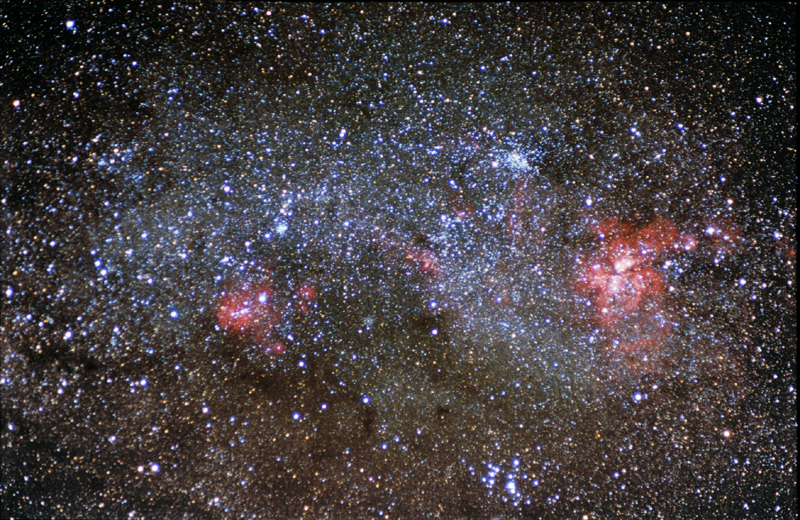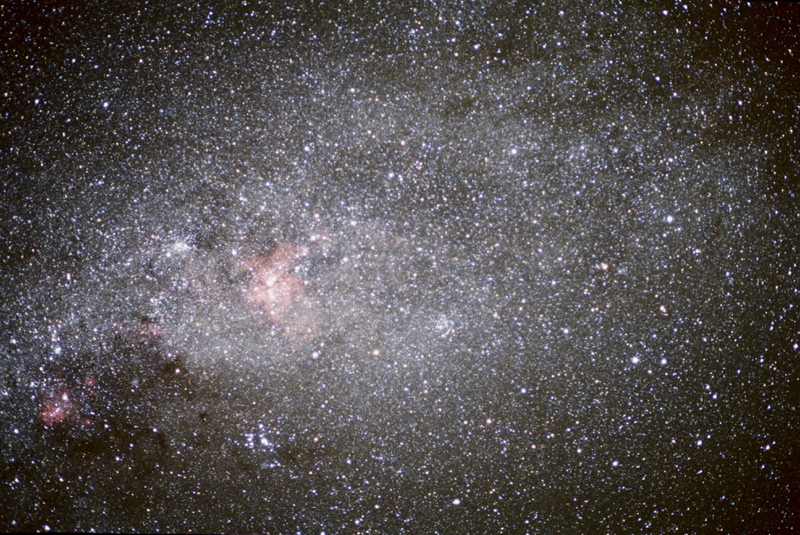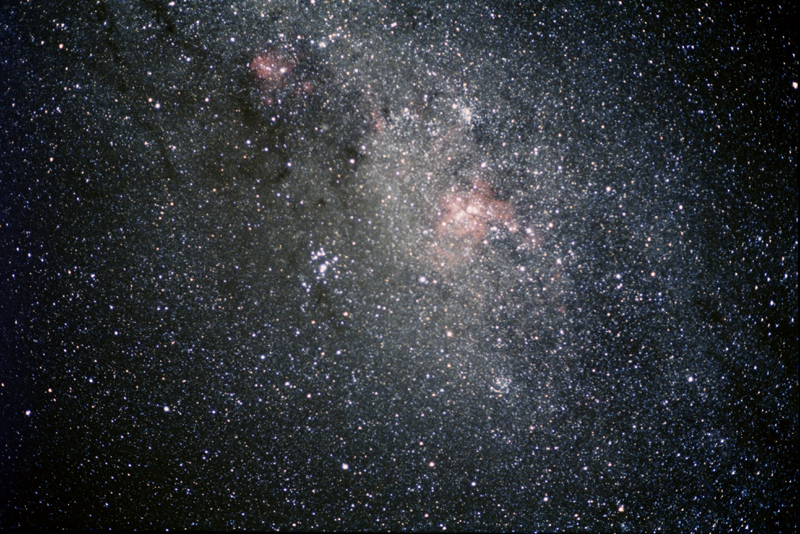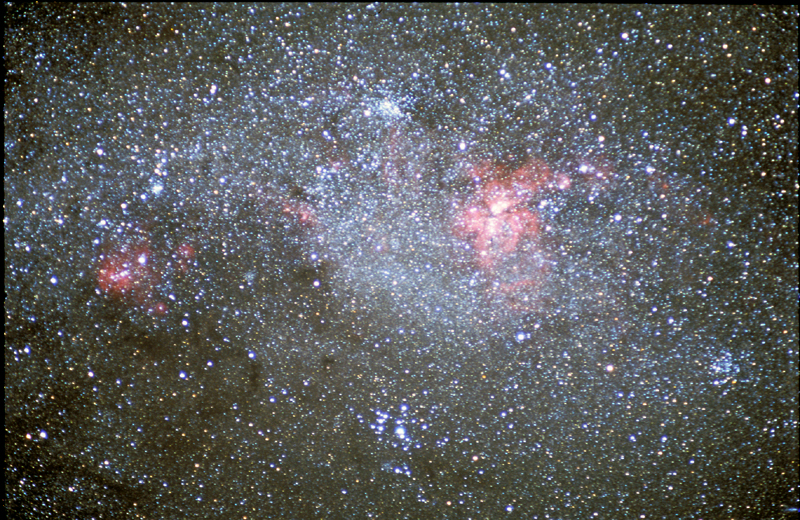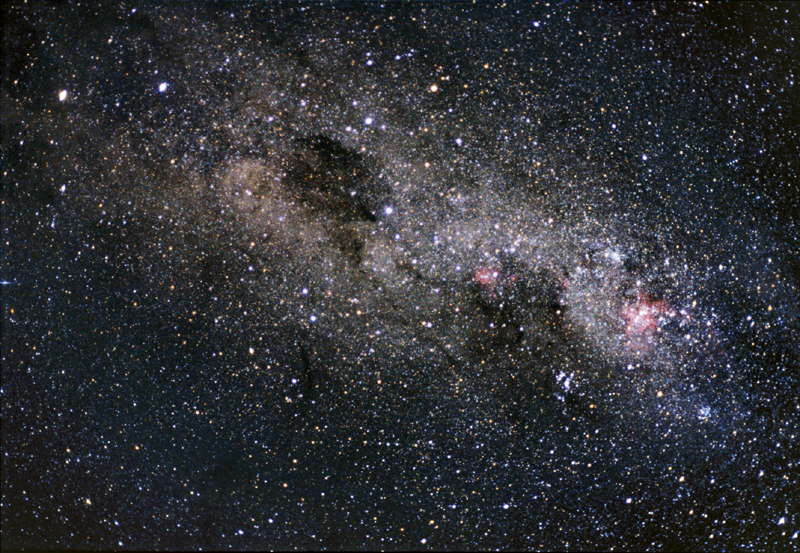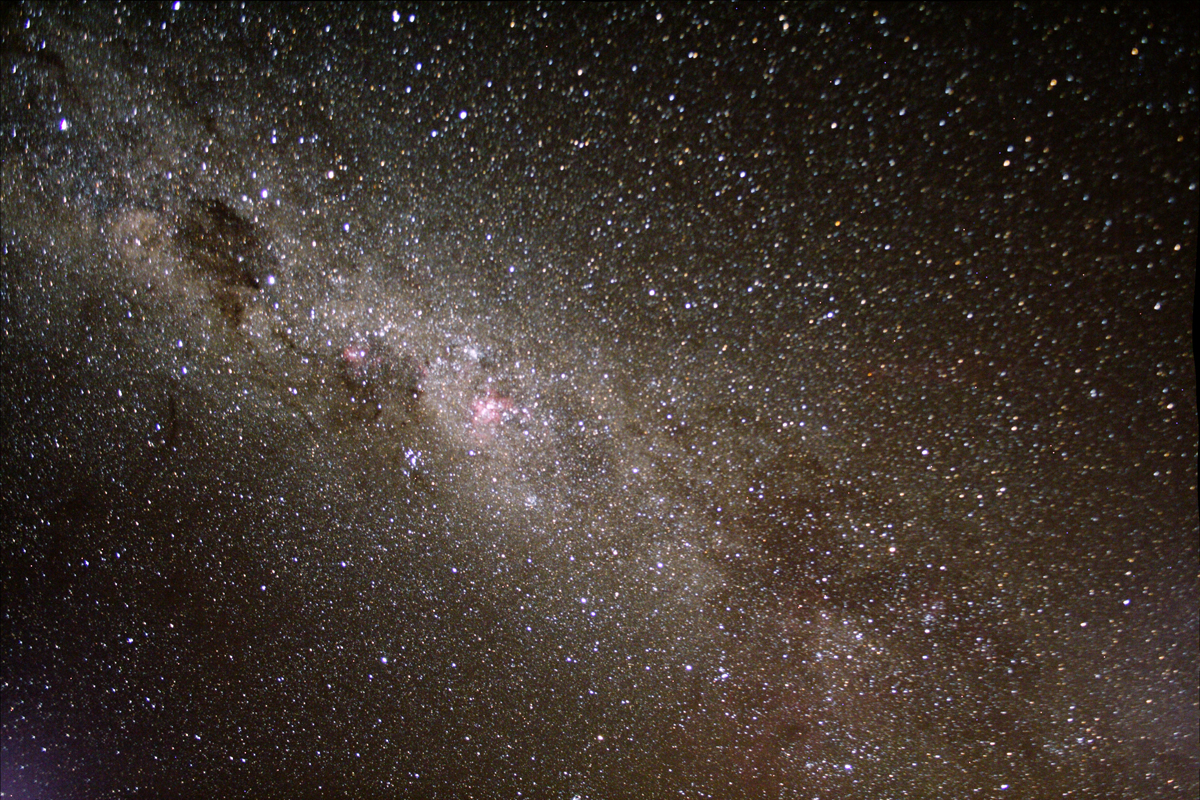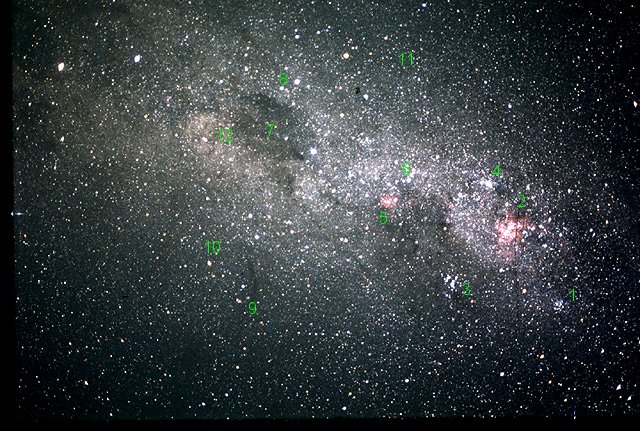
30 minutes exposure, Kodak Ektachrome 400 film. 50mm f/2 Nikkormat lens.

The Milky Way between Crux Australis and Puppis is extremely rich and bright. It contains many nebulae and open clusters, and provides many hours of pleasure for sweeping with binoculars or a wide field telescope.
The photograph above reaches from alpha centauri on the left, to the Puppis border on the right. Near the centre is the Southern Cross and the Coalsack. The large, bright nebula on the right is NGC 3372. A list of the objects marked on the image is given below.
| Number | Name | R.A. | Dec | |
| 1 | NGC 3114 | 10 02.7 | -60 07 | Image |
| 2 | NGC 3372 | 10 43.8 | -59 52 | Image |
| 3 | IC 2602 | 10 43.2 | -64 24 | Image |
| 4 | NGC 3532 | 11 06.4 | -58 40 | Image |
| 5 | IC 2948 | 11 38.3 | -63 18 | Image |
| 6 | NGC 3766 | 11 36.3 | -61 36 | Image |
| 7 | The Coal Sack | 12 50 | -62 38 | |
| 8 |
NGC 4755 The Jewel Box cluster |
12 53.6 | -60 21 | Image |
| 9 | NGC 4372 | 12 25.7 | -72 40 | Image |
| 10 | NGC 4833 | 12 59.6 | -70 52 | Image |
| 11 |
NGC 3918 The Blue Snowball |
11 50.3 | -57 11 | Image |
| 12 | Ced 122 | 13 25 | -64 00 |


This photograph is a wide angle view of the southern Milky Way. In addition to showing the objects mentioned above, it shows many of the dark nebulae in the region. An example is the thin dark cloud in the constellation Musca. (just below Crux) A close up view of part of this cloud can be found here.
The next two photographs are wide format images that show the Milky Way between Vela and the Southern Cross. This means that almost all of Carina is visible. The exception is the very western region, which includes the very bright star, Canopus. This star is just out of view to the right.

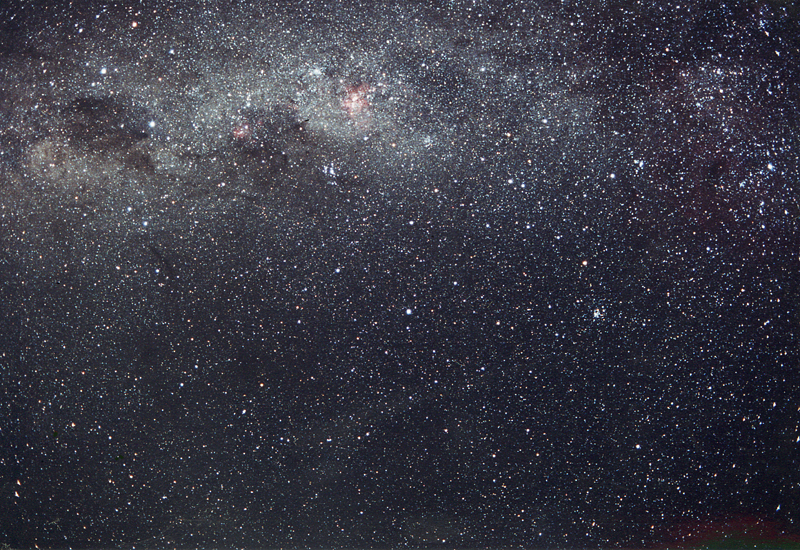
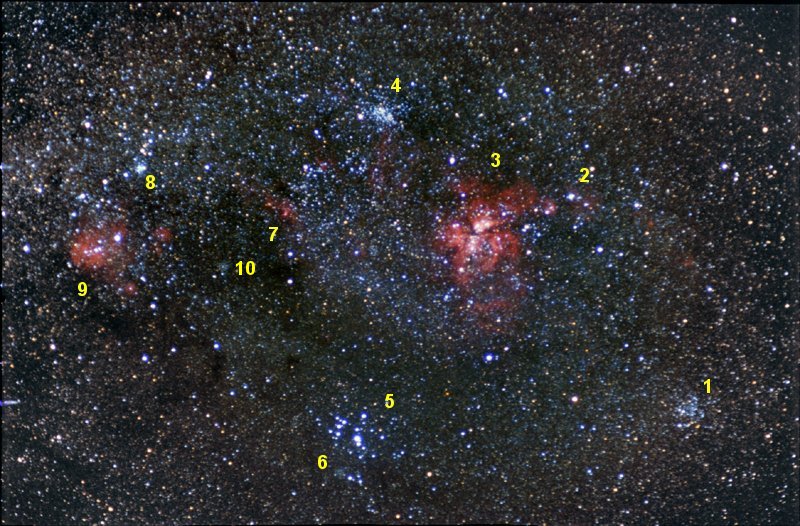
A more magnified view of the Milky Way at the Carina-Centaurus border, centered on the magnificent NGC 3372. Some of the more prominent deep-sky objects are listed below.
| Number | Name | R.A. | Dec | |
| 1 | NGC 3114 | 10 02.7 | -60 07 | Image |
| 2 | NGC 3293 | 10 36.1 | -58 15 | |
| 3 | NGC 3372 | 10 43.8 | -59 52 | Image |
| 4 | NGC 3532 | 11 06.4 | -58 40 | Image |
| 5 | IC 2602 | 10 43.2 | -64 24 | Image |
| 6 | Mel 101 | 10 42 | -65 06 | |
| 7 | NGC 3581 | 11 12.1 | -61 18 | |
| 8 | NGC 3766 | 11 36.3 | -61 36 | Image |
| 9 | IC 2948 | 11 38.3 | -63 18 | Image |
| 10 | IC 2714 | 11 17.3 | -62 42 |
